
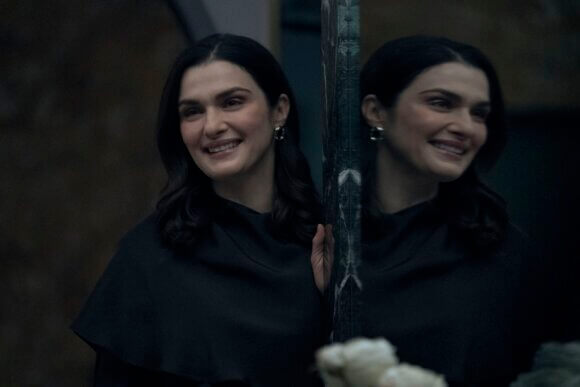
As a horror fan, I was delighted that 2023 not only delivered some top-notch genre films but also that there were enough directed by women to create a 10 best list. Women created a diverse array of horror from psychological thrillers to over-the-top gore comedy to creature features. They looked beyond just final girls to create fascinating, flawed, and sometimes deeply disturbed characters.
I measure progress not by how many positive female characters we get on screen but rather by the diversity and depth of the women driving the stories we see. Kudos to the female talent in front of and behind the camera that created these bold, original works in 2023.
2023’s Top 10 Horror Projects Directed By Women
1. Dead Ringers (2023, USA)
Key women creatives: Executive producer/star: Rachel Weisz; showrunner: Alice Birch; directors: Lauren Wolkstein, Karena Evans, Karyn Kusama; writers: Miriam Battye, Alice Birch, Lileana Blain-Cruz, Rachel De-Lahay, Ming Peiffer, Susan Soon He Stanton; cinematographers: Laura Merians Goncalves, Jody Lee Lipes; Editors: Erica Freed Marker, Lisa Lassek
Actress Rachel Weisz was a fan of David Cronenberg’s 1988 film Dead Ringers and suggested a gender flip. So in the Amazon streaming show Dead Ringer, we have the twin Mantle sisters who are obstetricians as well as gynecologists. Beverly dedicates herself to creating a new kind of birthing center while Elliot focuses on radical and potentially unethical research on infertility.
The gender flip changes the themes of the original story and offers an audacious reimagining of female body horror. The show presents women’s bodies – pregnant, giving birth, cut open for C-sections – in graphic ways that create a sense of body horror simply because they are making visible what we usually don’t see. But the most horrific body horror is never shown.
An episode directed by Karyn Kusama draws on historical fact as it references Dr. James Marion Sims, credited as the “father of modern gynecology.” Sims developed pioneering tools and surgical techniques for women’s reproductive health, but his research was conducted on enslaved Black women without anesthesia (a racist thought at the time was that the Black women did not feel pain the way white women did). The episode never shows the surgery but has Dr. James describe it in chillingly matter of fact terms that makes the woman seem a willing participant.
Kusama keeps repeating the story until it is seared into our brains.
The show is brilliant in how it addresses real issues about women’s bodies while never losing focus on the twisted tale of the Mantle twins. This is a remake done right and you will be riveted from the opening scene till the final fade out.
2. Huesera: The Bone Woman (2023, Mexico)
Key women creatives: Director: Michelle Garza Cervera; writers Michelle Garza Cervera, Abia Castillo; producer: Paulina Villavicencio; cinematographer Nur Rubio Sherwell; editor: Adriana Martínez; production designer: Ana J. Bellido
Huesera: The Bone Woman deals with body horror in a radically different way from Dead Ringers. It is visually stunning and almost poetic in its horror as it serves up a tale of domesticity reimagined. Valeria (Natalia Solian) is a young pregnant woman who has a loving husband and a good life. But she remains unhappy because it is not the life she wants.
Director Michelle Garza Cervera told me she did not want to focus “on the process of what happens to a female body literally throughout pregnancy. We’ve seen that a lot. It was more about the symbolic thing of something that is breaking you down, and it’s literally making you feel like your bones are fracturing.”
The horror comes from the conflict Valeria feels trying to reconcile what society wants her to be with what she imagines herself to be. Cervera grew up with an image of the rebellious women in her family as somehow evil because they did not conform to the traditional role of submissive housewife. “I had a fear while growing up as a little girl to be one of those because they would make fun of them or they would just be in these kind of boxes, canceled boxes,” Cervera said.
Now Cervera uses her art, and specifically the horror genre, to explore her questions in a symbolic way. “I feel like horror allows me to through one image, through one sound, to say something very complex that maybe takes you ten pages of essay.” Cervera added, “In one sound, you’re like, that’s how it feels. That’s how it feels when your family is asking you something very uncomfortable or social expectations are horrible and how do you express such a complex thing? And I feel like horror really allows you to do it in very fun ways and entertaining ways.”
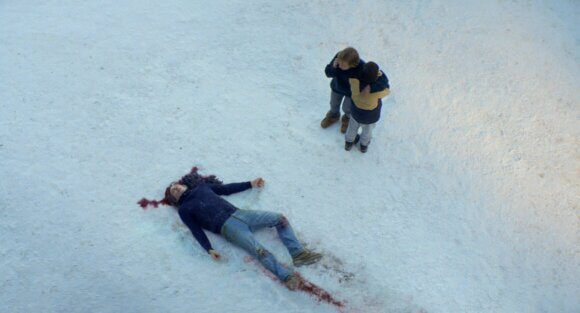
3. Anatomy of a Fall (2023, France)
Key women creatives: Director/writer: Justine Triet; producer Marie-Ange Luciani; production designer: Emmanuelle Duplay
Although many may not classify Anatomy of a Fall as horror, I think it has all the trappings of a horror film. Writer/director Justine Triet rachets up tension with the precision of Alfred Hitchcock or perhaps a Spanish Inquisitor. Her story involves a couple who have a fight and then the husband turns up dead, apparently from an accidental fall. But then the police start to suspect the wife of foul play.
The horror comes in part from how seemingly trivial things in a marriage can take on incriminating dimensions when played out in court in front of a jury. This is a film of exquisite craft and a surprising amount of nail-biting. In a sense, the horror comes from the mundane. There are no ghosts or serial killers or monsters, yet we feel a constant sense of stress and unease throughout the film.
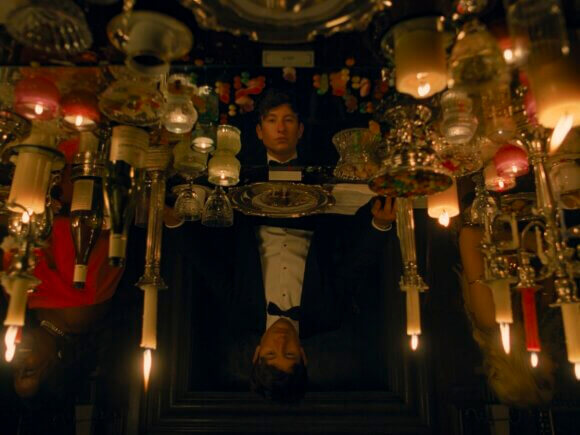
4. Saltburn (2023, England/USA)
Key women creatives: Director/writer/producer: Emerald Fennell; producers Josey McNamara, Margot Robbie; Editor: Victoria Boydell; production designer: Suzie Davies
Again, this may not strike people as horror but it deals with horrific events and bodies that pile up. Emerald Fennell made a very promising debut with Promising Young Woman, but the savage bite of that film’s opening failed to carry through to the end. With Saltburn, Fennel gives us a male protagonist instead of a female one and his journey ends on a much more satisfying note.
I like that Fennell does not feel that she has to only work on stories centered around women. Barry Keoghan is great at making the class warfare at the heart of the film feel visceral. Fennell also has wicked fun with some decidedly twisted scenes. The horror here is about how people treat each other and how a sense of disparity can fuel a deep and dangerous anger.
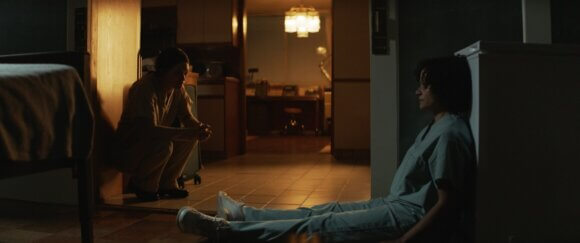
5. Birth/Rebirth (2023, USA)
Key women creatives: Director/writer: Laura Moss; producer: Mali Elfman; composer: Ariel Marx; cinematographer: Chananun Chotrungroj; editor: Taylor Mason; production designers: Courtney Andujar, Hillary Andujar
Poor Things gave us a gender swap on Mary Shelley’s Frankenstein in which the creature was a woman. Birth/Rebirth revisits the Frankenstein story and gives us a female doctor in place of a male mad scientist.
I just adore Marin Ireland’s character of Rose who is possessed by a desire to cheat death through science. Rose’s utter lack of tact, social skills, or even concern for her own physical health is admirable in a perversely satisfying way. Laura Ross structures the film with a relentless single-mindedness and along the way adds a layer of ferocious maternal instincts. This is a small, unpretentious film but well-crafted.
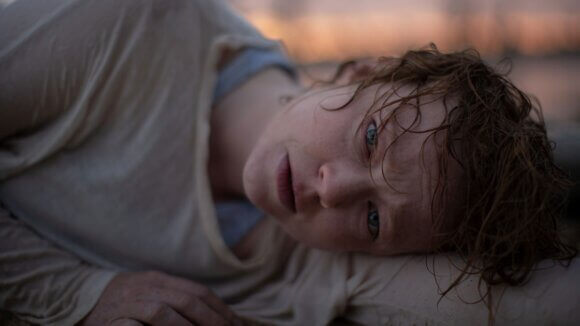
6. Run Rabbit Run (2023, Australia)
Key women creatives: Director: Daina Reid; writer: Hannah Kent; producers: Anna McLeish, Sarah Shaw; cinematographer: Bonnie Elliott; production designer: Vanessa Cerne
Run Rabbit Run is a kindred spirit to another Australian film, The Babadook. Both films give us a mother and child, and both present a family dynamic that is disturbingly strained. The specifics of the relationships are very different but both tap into a maternal fear about what do you do if your child is difficult or doesn’t seem to like you.
Run Rabbit Run has elements of a ghost story paired with an intense psychological thriller. Sarah Snook is great as Sarah, a mother whose seven-year-old daughter suddenly starts to insist that she is Sarah’s sister who mysteriously went missing at the age of seven. The daughter’s behavior stirs up long buried memories as well as dark secrets.
Daina Reid takes her horror seriously and delivers an intensely personal and deeply dark story.
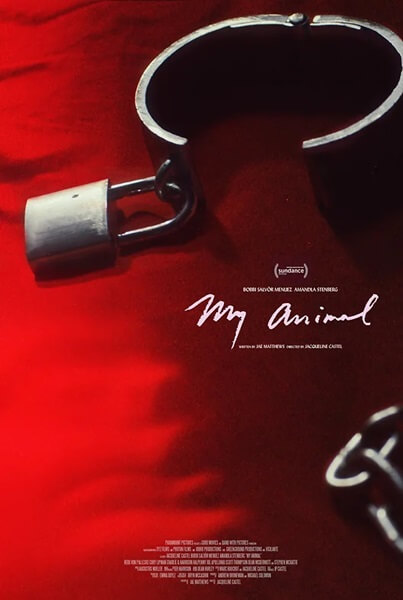
7. My Animal (2023, Canada)
Key women creatives: Director/editor: Jacqueline Castel; writer Jae Matthews; production designer: Emma Doyle
I love a good werewolf tale and we get too few, and even fewer with female werewolves. In this case, being a teenage werewolf provides a perfect metaphor for a changing body, troublesome hormones, and a sense of just not fitting in anywhere. Jacqueline Castel does not go for the teen werewolf comedy but rather gives the film both grit and a dreamy sense of sexual awakening.
Bobbi Salvör Menuez is Heather, whose father (the great Stephen McHattie) is also a werewolf. But perhaps more terrifying is her human mother who spends most of her time drunk. Heather’s environment feels very real and as unforgiving as the cold landscape. She gets flack for being a girl wanting to play hockey and abuse for displaying affection for an attractive woman skater. The father-daughter scenes are excellent, and Castel has great compassion for Heather. The horror elements are kept in the background but are smartly used.
8. Unseen (2023, USA)
Key women creatives: Director: Yoko Okumura; producer: Paige Pemberton; composer: Tangelene Bolton
Unseen was a delightful surprise. Yoko Okumura delivers a clever horror comedy that begins with an unusual premise: a near blind woman is running from her murderous ex in the woods and in order to survive she needs a put-upon gas station clerk to be her eyes through a video call. The premise takes a little dancing around to get in motion but once it does, Okumura has a blast with it. She uses split screen in inventive ways to play the two locations and characters against each other.
Emily (Midori Francis) has to deal with an ex who just won’t stay down no matter how many times she hits him. Meanwhile, Sam (Jolene Purdy) deals with an increasingly dangerous situation at the gas station when she has to steal a phone from an obnoxious rich bitch. Okumura gives the gas station a delightfully garish splash of color to contrast with the ever-darkening woods that Emily is in. The editing and visual design are both assured and deliciously fun. I look forward to whatever Okumura does next.
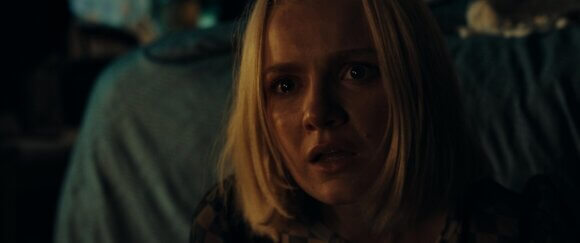
9. Appendage (2023, USA)
Key women creatives: Director/writer Anna Zlokovic; producers Katrina Kudlick, Hadley Robinson, Anna Zlokovic; production designer Michelle Patterson
Body horror again! This time it is a young woman named Hannah (Hadley Robinson), who grows an appendage that separates from her body and decides it wants to take over her identity. Yet another take on female body horror and birth with some interesting twists.
What I loved most about this film was the unique way it chooses to resolve Hannah’s “relationship” with her appendage. The appendage creature is effectively designed and there are some good turns (but a couple plot holes) to the story.
10. Where the Devil Roams (2023, USA)
Key women creatives: Co-directors/co-writers: Zelda Adams, Toby Poser
I want to shout out this film not just because there are women as key creators but because this family (that slyly refers to itself as The Adams Family) is working completely outside the mainstream and cranking out films that are uniquely their own. My favorite of theirs might be their 2019 film, The Deeper You Dig. It was a tightly constructed, claustrophobic story that I loved.
Where the Devil Roams is probably their most ambitious in terms of visual style and production. It is set against the backdrop of a circus freak show, an environment that has been mined many times before but the Adams use it well. The film is created by husband and wife John Adams and Toby Poser, and their daughter Zelda Adams. Their work gives new meaning to the idea of home movies as they pursue the stories that interest them, and so far all have reveled in horror elements.
Major props to them for making exactly the kinds of films they want and proving that you can deliver solid work without traditional industry support.
Flawed but worthy of mention:
Alexis Jacknow’s Clock (2023, USA) for getting into an unhinged mind and creating tension by keeping us uncertain of what’s real and what’s not; Wrath of Becky (2023, USA), co-directed by Suzanne Coote with Matt Angel, for a gleeful gorefest; Nahnatchka Khan’s Totally Killer (2023, USA) for a time travel slasher horror comedy but I wish the protagonist spent less time acting shocked about political incorrectness in the ’80s and morally superior; Emma Tammi’s Five Nights at Freddy’s (2023, USA) for the animatronic creatures from Jim Henson’s Creature Shop; and Jennifer Reeder’s Perpetrator (2023, USA) for a pair of delectable performances by Alicia Silverstone and Kiah McKirnan.
The post 10 Best Women Helmed Horror of 2023 appeared first on ShowbizJunkies.
0 Comments